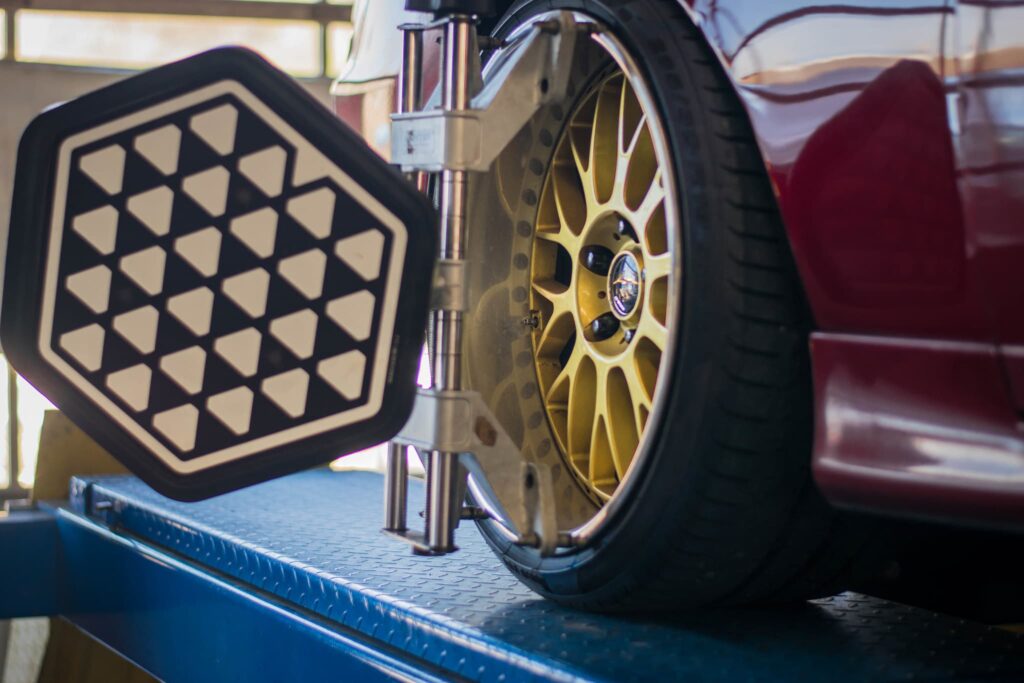You’ve probably heard the terms “oversteer” and “understeer” when talking about a car’s handling — especially when it comes to its sensitivity while cornering.
Simply put, when you turn your steering wheel, you want your car to take a very specific path. But if your car tends to understeer or oversteer, things may not go as planned.
Curious about the difference between understeer and oversteer? And if you are experiencing it, are you wondering how to fix it?
In this comprehensive guide, we’ll break down everything you need to know about these unpredictable conditions and how you can correct them.
What is Understeer?
As you turn your steering wheel, you’re expecting your car to turn a certain amount too. Understeer happens when the front tires start to slip, causing you to have a wider turn radius than you were anticipating.
This mismatch of performance and expectations can lead to a dangerous situation as this lack of grip from your front wheels causes your vehicle to slide into the opposing lane of traffic or right off the road.

What Causes Understeer?
If your car is suffering from understeer, there are a few things that might be causing it. While most understeer causes are related to the way you’re driving, there are a few ways that you could set up your car that might be exacerbating the condition.
Some of the driving issues that lead to understeer are:
- Braking too hard while turning
- Entering a turn with too much speed
- Accelerating too much while turning
These are all common side effects of the way centrifugal force affects our vehicle, and we’re all aware of how it works, even if we’re not familiar with the technical terminology that goes with it. It’s basically why we all slow down when making sharp turns.
But while the conditions mentioned above are how we get to understeer, other factors can make understeer more common — which is where the problems start to crop up. These conditions include:
- Too little tire pressure in the front, or too much in the rear
- Front shocks are too stiff, or rear shocks are too soft
- The front end is too high, or the rear end is too low
- Rear tires are too wide, or the fronts are not wide enough
This list isn’t all-inclusive, but they are some of the most common reasons for excessive understeer.
If your vehicle has a stock setup, you should start with using a racing tire pressure gauge before moving on to check out worn components like shock absorbers.

Let’s Talk About Oversteer
While understeer happens when your front tires start to slip, oversteer occurs when your rear tires don’t get enough traction. Instead of having a turn that goes too wide, you end up with a far sharper turn than you expected. This is something you can expect to experience in many high performance RWD cars.
When you’re oversteering, fishtailing is common — which is extremely dangerous and can quickly lead to an accident or you accidentally flipping your vehicle.
Because you get oversteer when the rear wheels lose grip, oversteer is far more common with rear wheel drive vehicles. In fact, if you lift-off your throttle mid-corner you’re more likely to experience snap oversteer.
That’s one of the reasons why drift cars tend to have emphasized oversteer characteristics and are always rear-wheel drive.
What Causes Oversteer?
Oversteer is extremely dangerous, so if it’s happening while you’re driving, you need to narrow down the cause quickly. Just like understeer, oversteer is caused by a number of factors, starting with your driving conditions.
Even though oversteer comes down to your driving, there are several conditions on your car that can make oversteer a bit more common.

If you’re driving the way you should and oversteer is still a concern, there are few things that could be causing the reduced performance. Those factors include:
- Too much front tire pressure, or not enough pressure in the rear
- Front shocks are too soft, or rear shocks are too stiff
- The front end of the car is too high, or the rear is too low
- The rear tires are too narrow in comparison with fronts that are too narrow
This isn’t a comprehensive list covering all the possible causes of your oversteer, but it does encompass the most common ones.
You might notice that while the same driving factors cause oversteer and understeer, the way you correct each condition is precisely opposite to each other. That’s because when you’re trying to correct the issue, you’re just trying to balance out the traction.
By getting more traction on the front axle, you’re taking some from the rear and vice versa.
How Handling Affects Performance
Both oversteer and understeer have severe implications for the performance of your vehicle. Whether you’re traveling at high speeds at the track or crawling through your community, you need your vehicle to handle the way it’s supposed to.

Whether your car is under, or oversteering, both scenarios cause you to temporarily lose control of your vehicle. While you can always take turns a bit slower in your daily driver, if you’re looking to set up your car for the track, the last thing you want to worry about is if you have to slow down a little more while cornering.
But that’s precisely how excessive oversteer or understeer will affect your performance. Keep in mind, however, that both understeer and oversteer are completely normal responses to specific driving conditions.
How to Correct Your Car’s Steering
It’s only when you’re experiencing a lack of front or rear end grip when you shouldn’t that it becomes a concern, and you should start making modifications to your vehicle.
Generally this will involve making changes to your car’s suspension geometry. Most commonly, you will adjust:
- camber, and
- caster angles.

This said, your tires will absolutely come into play as well. If your current tires are old, worn or made of cheap rubber you’ll be amazed at how much a quality set of tires can change how your car grips under different forces.
In addition to this, staggered wheels can also make a difference (both in fixing the problem, or making it in the first place).
Understeer vs Oversteer: Which Is Worse?
While neither condition is safe, understeer is safer than oversteer. That’s because, with understeer, your vehicle travels along a predictable path, even if it’s not where you wanted to go. For this reason, many new cars are set up with a bias to understeer, especially those with front wheel drive.
Oversteer, on the hand, is less forgiving. After you start to fishtail, your vehicle can go anywhere. Oversteer will have you sliding all over the road and potentially flipping your car if things get too bad. If you’re understeering, you can usually start to slow down to rectify the situation.
A Final Note About Understeer and Oversteer
If you’re expecting a magic fix to completely eliminate these handling characteristics from your car, you’re out of luck. Because at a certain point, you’re just going to have to slow down while making turns.
The time when you should start making adjustments is when your vehicle isn’t performing as it should. If your vehicle could usually make that turn at 15 miles per hour, but now it’s fishtailing unless you go at 10 — that’s when you have a problem.
Don’t sacrifice on performance, but don’t think that a few tweaks will turn you into Mario Andretti either.
What’s your take on driving with understeer and oversteer? Tell us your experience in the comments below!

